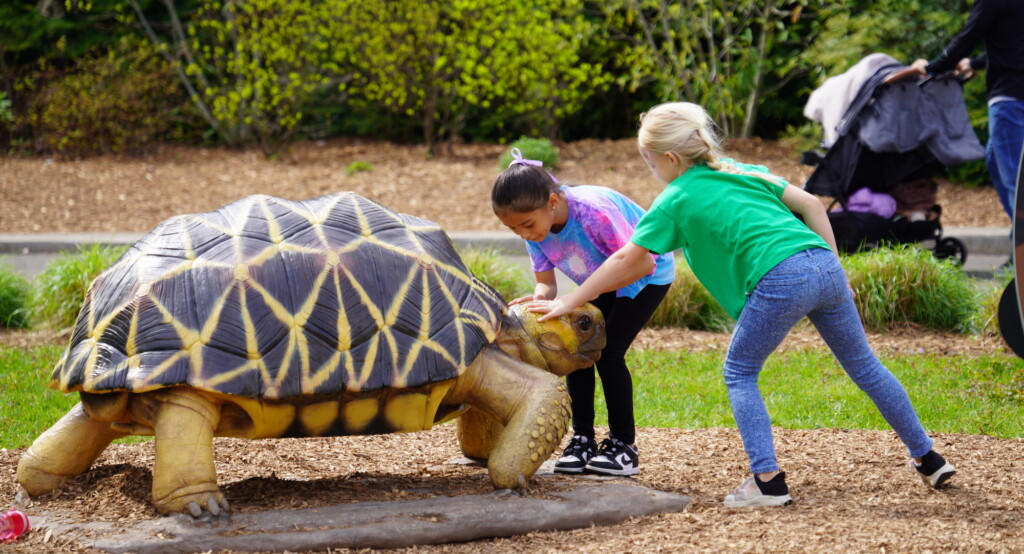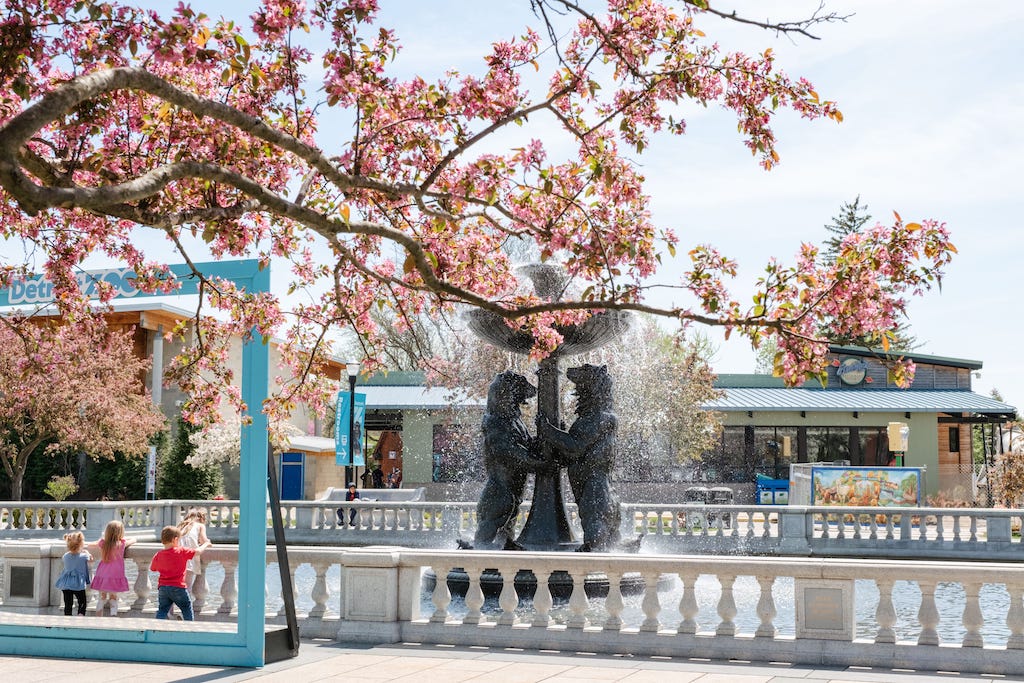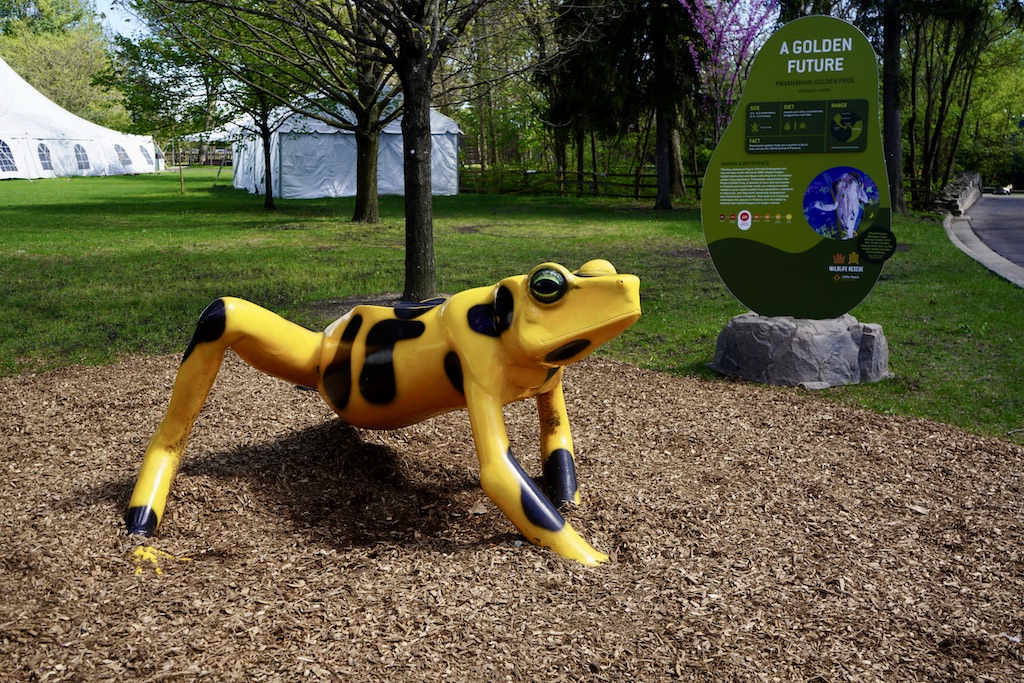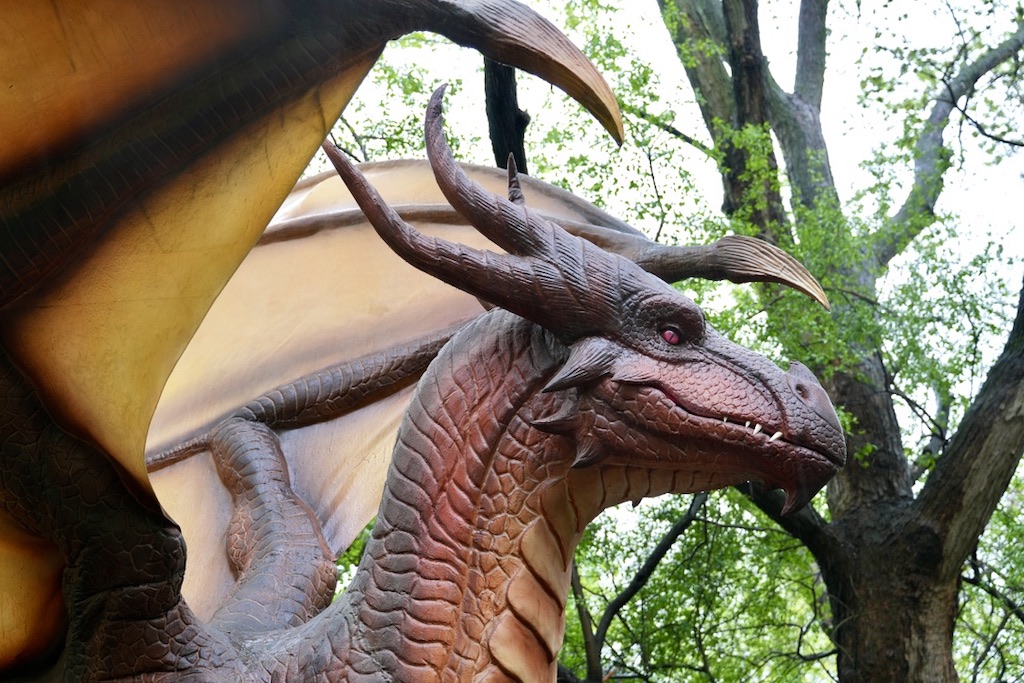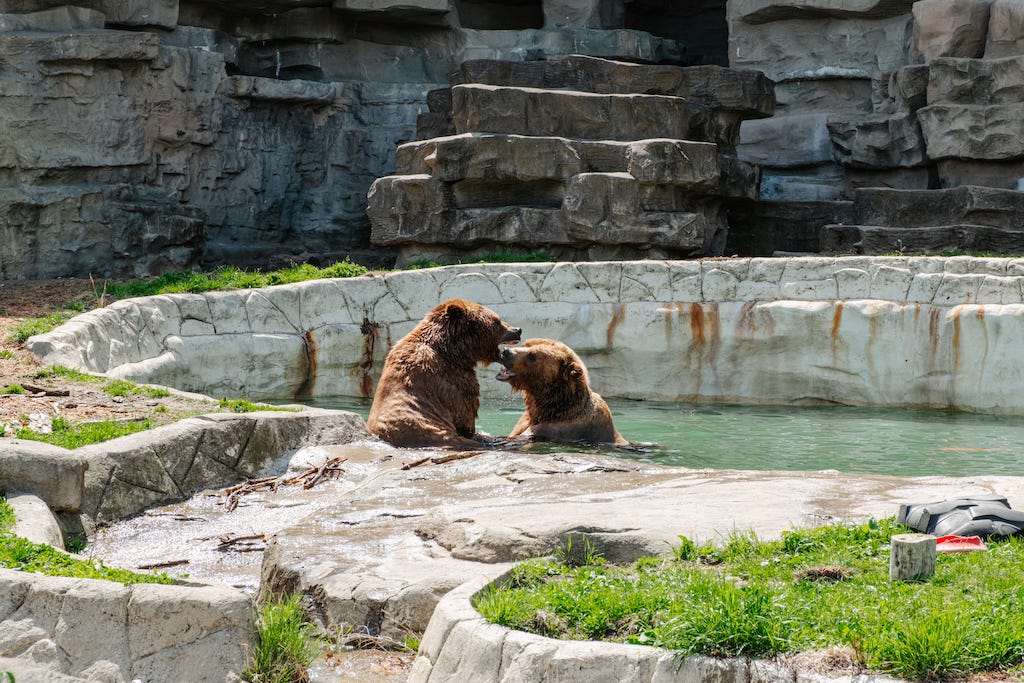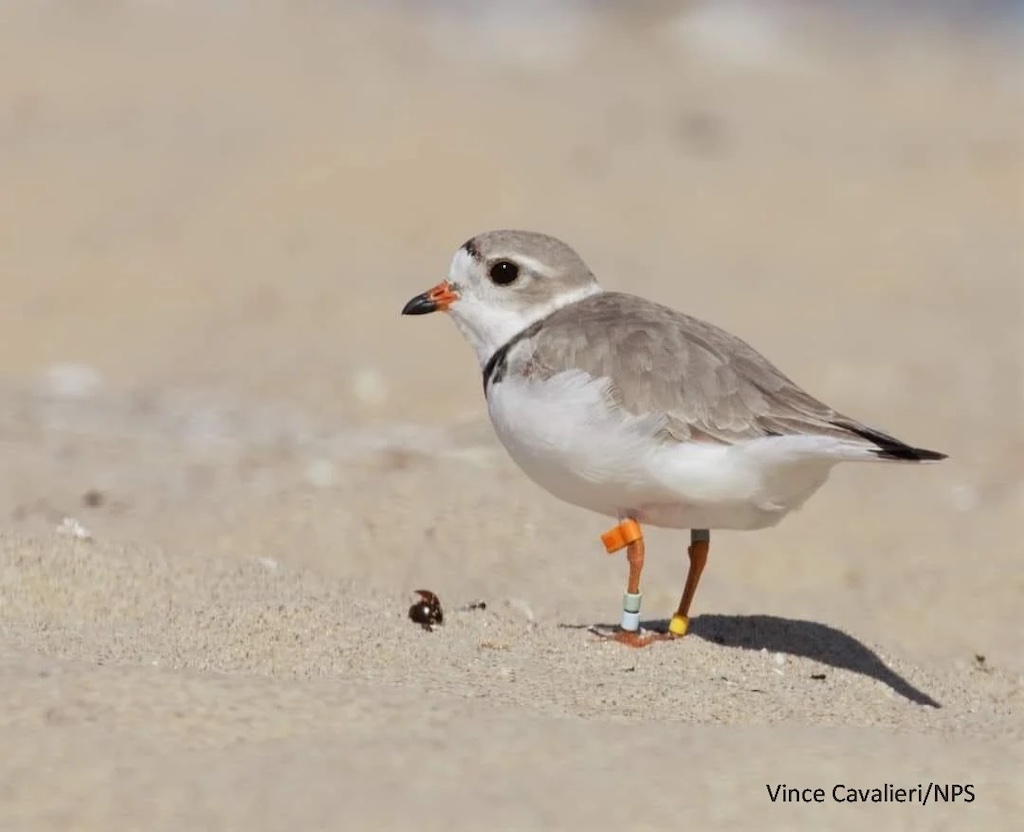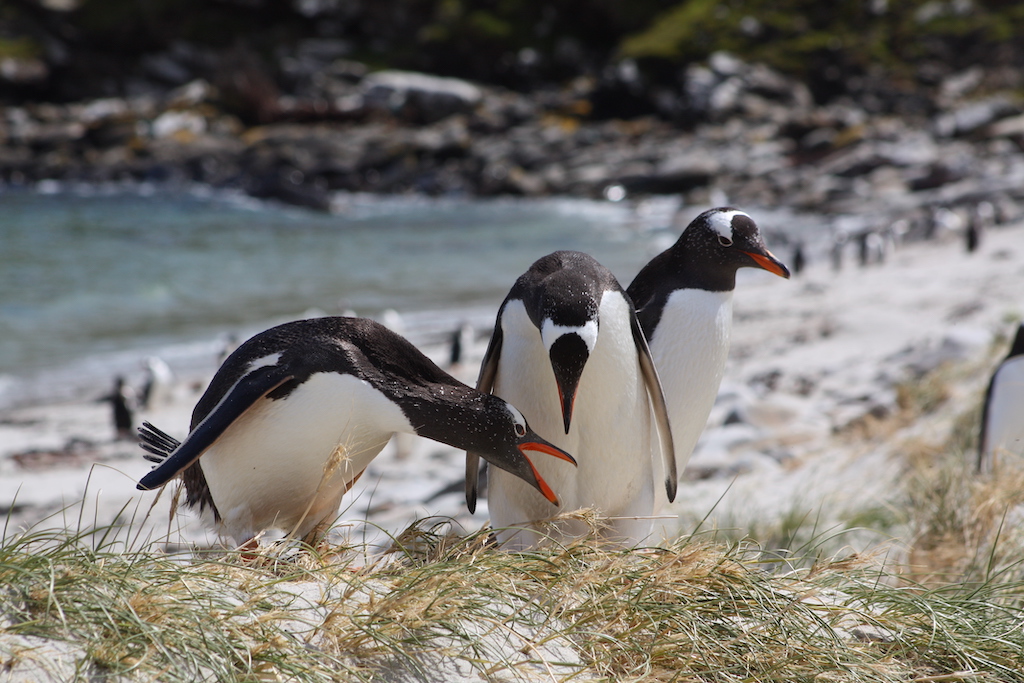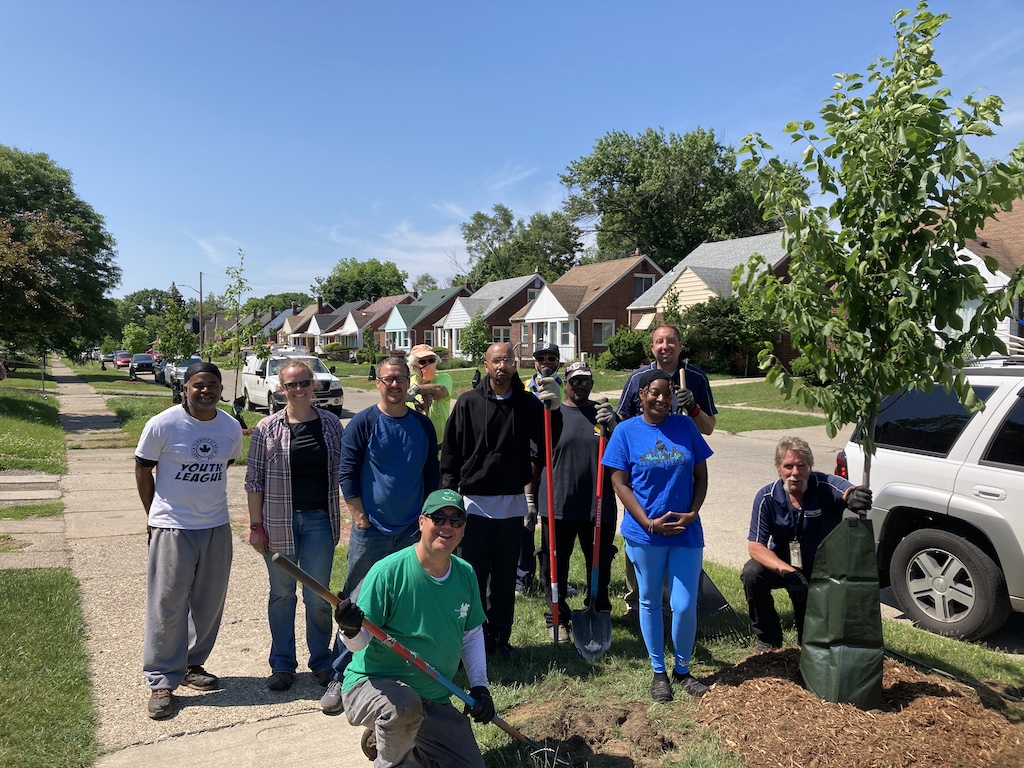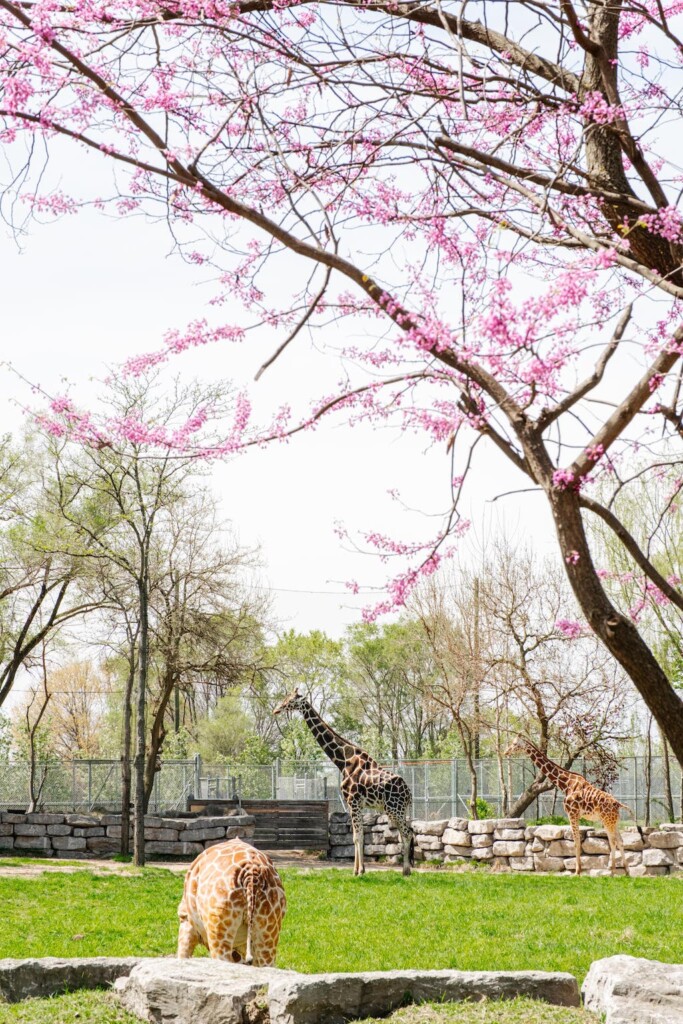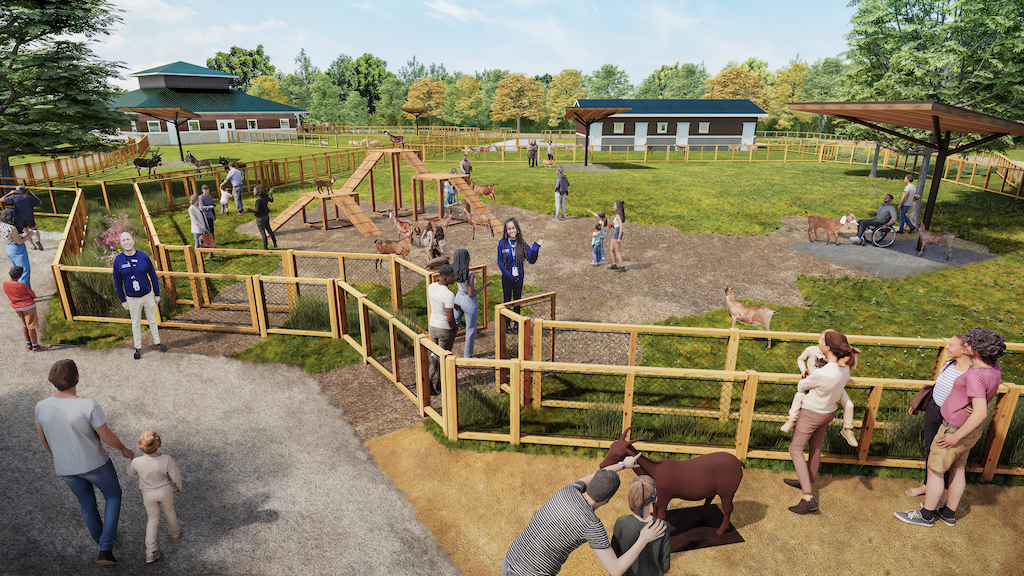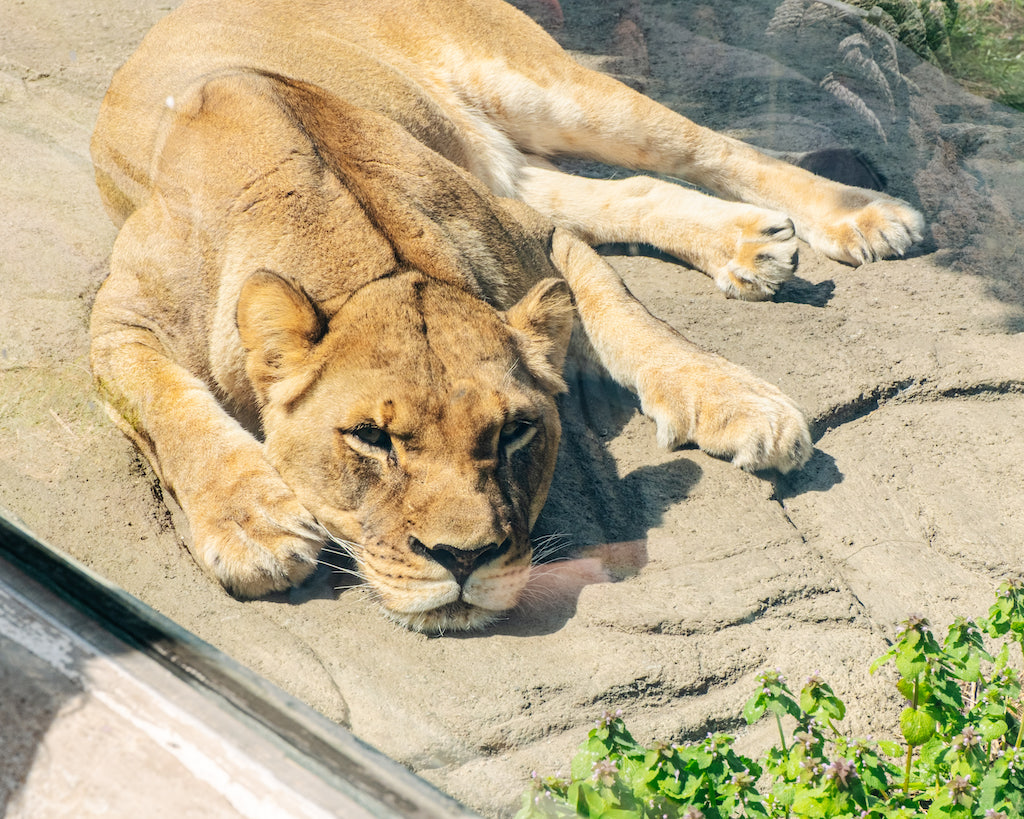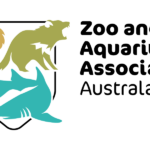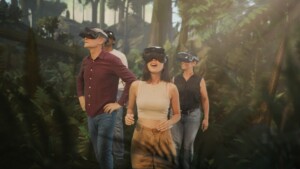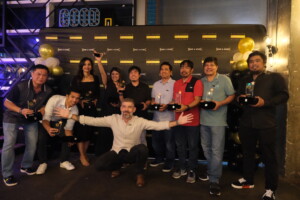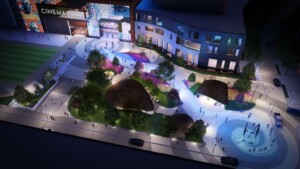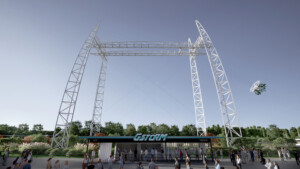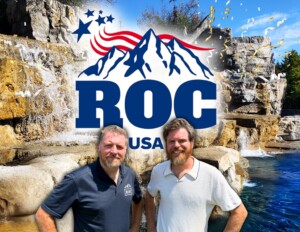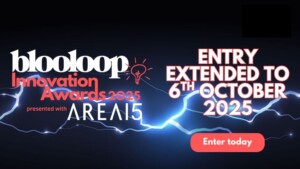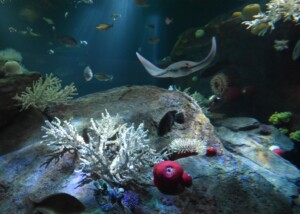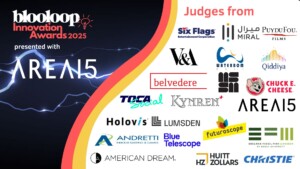Detroit Zoo in Royal Oak, Michigan, is known for its forward-looking methods in animal care, engaging visitor experiences, and commitment to worldwide conservation efforts.
Visited by 1.3 million people annually, the AZA-accredited facility is operated by the Detroit Zoological Society, which also oversees the Belle Isle Nature Center.
Blooloop speaks to Randi Hamilton, chief experience officer at Detroit Zoo, about how the attraction is helping guests connect with nature, understand environmental issues, and make positive changes to protect the world around us – all while enjoying a fun day out.
Detroit Zoo’s mission
Speaking about what drives the Detroit Zoo team, Hamilton says:
“Our mission, vision, and values speak to the heart of who we are. Our purpose is to ignite positive change for animals and nature, and our mission is to do that by creating meaningful connections for people, animals, and the natural world. It all ties together, and we use that as our guiding principle, our filter for decision-making.
“We put a lot of intentionality into the decisions we make, the programmes we produce, and the experiences we work to develop.”
The team cares for over 2,000 animals representing over 200 species on a 125-acre campus at the zoo.
“It’s a big, beautiful space for our community to connect, not only with nature but with each other. On top of that, we focus heavily on animal well-being and educational initiatives, tying all that together to create unique connections that build empathy. That contributes to how people see us as a credible, mission-driven organisation.”
The zoo is also known for its transparency and fiscal responsibility, she adds:
“We’re well rated with our GuideStar participation as far as our charitable organisation status is concerned. Another exciting aspect is our economic impact. More than $167 million annually is contributed to the local economy through our operations. We also have a huge membership base, which contributes to why we’re so special and have such a loyal following, with more than 42,000 member households.
“Those individuals are the ones that keep us going and are a big part of why we’re here.”
A meaningful guest experience
When it comes to curating the guest experience, Hamilton says that, for a modern zoo, this work should be about shaping something intentional and meaningful for visitors.
“With such a broad audience, there are many ways to do that, and that’s what makes it exciting. I see my role as an absolute privilege, especially getting to work with our team’s incredible talent and passion. We approach things from every angle, thinking about members, long-term giving audiences, the next generation, and how they view the zoo.”
Creating experiences that are meaningful and genuinely immersive, allowing people to connect in a way that works best for them and that can inspire while still being inclusive, is critical for the Detroit Zoo team, she adds:
“It doesn’t matter whether someone is attending a keeper talk or a fundraising event; if they feel welcome and connected, we’ve done a good job.
“What we hope is that the experiences we create now can ignite action, whether that’s someone taking what they’ve learned and sharing it, changing something in their own home, starting to compost, building a rain garden, or contributing to a global animal relief fund.
“Anything we can do that creates a connection for someone, in a way that’s meaningful to them, is really what brings joy to my day.”
Education and entertainment go hand in hand at Detroit Zoo
Yet, there can be a challenge in balancing this educational element of the experience with the need to entertain.
“It’s tricky, but on the other hand, for us, it’s a very welcome challenge,” says Hamilton. “Because in our minds, it doesn’t have to be either fun or education. To us, they’re all intertwined.
“We’re very mindful of our audiences. We get a lot of input from them and lean on their feedback. Also, we rely on studies to better understand how people learn and what will make things stick, so to speak.”
For Detroit Zoo, it’s about designing hands-on experiences that elevate the stories; storytelling is critical. “That’s the stuff people remember. Those are the things they take away.
“Maybe it’s connecting someone to a memory they’ve had or a story that was important to them and then relating it to a story we’re sharing. The more we can create those kinds of opportunities, ones that are meaningful and approachable, the more I think people will take away about what they can do to support the natural world.”
Storytelling meets conservation
Recent examples of the zoo’s programming include initiatives that combine outdoor play with storytelling around wildlife conservation. “This past season, we had Wildlife Rescue [pictured, top], which was a climbing experience featuring small animal climbers spread throughout our campus,” says Hamilton.
“It was tactile and fun for kids, a great photo opportunity for families and visiting groups. But it also shared important stories about each animal, whether it was an orangutan or a red panda.”
These stories weren’t just displayed; there was an in-person encounter aspect, too, she adds: “We partnered with our education team and our volunteers to host pop-up interactions throughout the zoo. Guests could walk up during their visit and learn directly from our team.
“We also shared these stories online, allowing people who couldn’t visit in person to engage with the content and understand its conservation messages.”
This year, the zoo is launching Dragon Forest, an immersive, three-acre experience trail centred around dragons and mythical creatures.
“It’s a fun, imaginative way to connect people with nature. The idea is that nature has long influenced myth and storytelling, and this space lets guests explore that relationship. There are opportunities to climb, touch, smell, and listen to sounds within the space. There will be storytelling flowers, fairy gardens, and other elements that link to the flora and fauna of the area.
“It’s another creative way to inspire curiosity and connection.”
Accessibility at Detroit Zoo
Other guest experience innovations that Detroit Zoo is introducing include ReBokeh, an assistive technology tool designed for guests with visual impairments.
“It’s often used in museums, but we’re one of the first zoos to use it this way,” says Hamilton. “It enhances engagement with our interpretive signage and natural spaces, helping guests experience the zoo in a more accessible and meaningful way. We’re excited to roll that out.”
“We’ve also developed new mobile apps and are incorporating augmented reality on campus in different ways. We’re also expanding our engagement schedules at the zoo and the Nature Center so guests can plan for a more elevated experience, whether learning from our keepers, participating in special activations, or engaging beyond the traditional daytime visit.”
Conservation at home and abroad
Conservation is at the heart of everything that Detroit Zoo does.
“One of the things we continuously focus on is how we tell those stories because there is just so much happening, and we’re always looking for ways to elevate that,” says Hamilton.
“We have many programmes, not only in our backyard but also on all seven continents, all of which are critical. From a local perspective, we’re very active in rescuing and releasing piping plovers. Just recently, in 2024, we reached a milestone. I believe the total is now 17 piping plovers successfully hatched and released back into the wild, which is exciting.”
“We have team members who travel to Peru to support planting fruit trees, building connections with local communities, providing science education, delivering supplies, and helping with access to clean water resources.
“In the Falkland Islands, we’ve contributed to important penguin research — work that also informs what we do here at home in our Polk Penguin Conservation Center.”
“We’ve also made strides with our Partula snail conservation efforts. We recently did another release, and to date, we’ve helped return around 1,000 Partula snails to the wild in partnership with other zoos and organisations. We’re very proud to be part of that collaborative effort.”
Overall, Detroit Zoo participates in 12 AZA SAFE programmes. This stands for Saving Animals From Extinction and is an initiative spearheaded by AZA, the Association of Zoos and Aquariums. The zoo has numerous team members actively engaged, whether through boots-on-the-ground fieldwork, research support, or both.
Engaging the local community
Closer to home, the zoo team also works hard to engage its local community. With a strong membership base, it is a beloved institution for many who live nearby.
“Not only do we host opportunities here on the zoo grounds and at the Nature Center, but we also find ways to invite people to join us in other programmes out in the community,” says Hamilton.
“We’ve done everything from volunteering to community support. For example, we have a programme with The Greening of Detroit, where we participate in tree plantings throughout the city. We share those opportunities with our member base and invite them to join us.”
“We also take part in a number of community engagement events with other local organisations, where we can celebrate and elevate their mission alongside ours.”
Each year, Detroit Zoo hosts more than 72 ticketed and non-ticketed events that align with its mission. Member perks are tied to many of those events, from early access to exclusive experiences.
“From a membership standpoint, not only are they informed about opportunities in advance, but there are also many ways to get involved. We take their feedback seriously and always look for ways to continue enriching that relationship with our members.”
Sustainability
Sustainability is increasingly important for all types of visitor attractions, but at Detroit Zoo, it is embedded into operations, says Hamilton:
“Just like conservation and animal well-being are part of our planning process, sustainability is another essential element. We’re always asking: what are the sustainable factors we must consider? How will this impact the animals around us? If it’s a physical product being installed, what are the implications, and what are the stories or explanations we need to share with our guests?
A perfect example is Discovery Trails, which is opening in 2026.
“It’s a seven-acre site, and within that space, we’ll have 12 rain gardens, all planted with native species. We’ve put much thought into ensuring that our stormwater management process complements the new infrastructure, particularly because we’re part of a significant watershed area.”
“That watershed is critical to our region, so we feel it’s crucial to walk the walk, not just talk the talk when it comes to sustainability.”
The zoo also invests in the minds of the future, she adds:
“Our Tri-County Green Schools programme supports student-driven green initiatives in local school districts as part of our Green Prize programme. We help support their innovation and ideas for the future, and each year, we celebrate the winning schools here at the zoo.
“It’s a great way to infuse our practices into the broader community, from what we do on-site to how we support renewable energy. We’ve worked hard to reach 100% renewable electricity for our operations.
These efforts reflect the zoo’s commitment to being more than just a destination: “We aim to be a hub for the community and a catalyst for collective action around sustainability and the protection of the natural world.”
Inspiring the next generation at Detroit Zoo
One of the key responsibilities of a good modern zoo is to inspire the next generation to care about the planet around them.
“What we do know, especially with how people are receiving information today, is that the stories we tell need to be authentic, transparent, and purposeful,” says Hamilton. “They need to spark thought and, hopefully, inspire action.”
For Detroit Zoo, it’s about ensuring it tells stories with a long-term impact.
“We want to go deep enough to create real understanding, the “why” behind what we do. That also means pulling back the curtain. When we share all the exciting aspects of working with animals or highlight innovations, we also need to show how we got there. What’s the journey, and what insights did we gain along the way?”
It’s also important to consider where and how to share those stories, she adds: “Are we using the right platforms? Are we reaching people where they are in a way that resonates? Because that’s how we’ll make the greatest impact.
“It’s about creating open, welcoming conversations. Yes, there’s scepticism. Some people question the relevance of zoos today. But for us, it’s really about our responsibility to help people understand nature, why it matters and what role we play in ensuring it thrives into the future.”
The team tries to meet scepticism not with defensiveness but with honest dialogue. “We want to understand why someone might think a certain way and then meet them there in conversation.
“These are complex issues. How do we distil all that complexity into something palatable and understandable? Because it’s easy to feel overwhelmed. We don’t want people to feel defeated before they even get started. Instead, it’s about helping people take one step at a time.”
Discovery Trails
Looking to the future, Detroit Zoo will launch Discovery Trails in 2026.
“We’re very excited for Discovery Trails,” says Hamilton. “It’s the most expansive new experience in the history of the Detroit Zoo.
“Last year, we launched a new visual identity and brand in May 2024, which aligned with a refresh of our key commitments and core values. It brought our mission back to the forefront, and Discovery Trails will be the first significant expression of the future we’re working toward.”
“Every team here has played a critical role in creating environments that are not only innovative but deeply mission-driven. This space will feature new species we’ve never had before and the return of some species that haven’t been part of the zoo for a long time.
“There’s a lot of innovation in how visitors will experience these habitats, not just through animal encounters but also through meaningful connections to actions they can take to make a difference.”
The project also includes new amenities, entertainment features, and accessible experiences designed to be welcoming to all. This includes a wheelchair-accessible tree trail, an interactive goat yard, and opportunities to engage with stingrays and bamboo sharks.
“There will also be a strong art component, with installations by local artists and our team members. Overall, Discovery Trails will be a versatile, immersive experience that reflects the heart of who we are and where we’re headed.”
A passionate team
Finally, reflecting on her role and what inspires her about the work, Hamilton says:
“One thing people don’t realise about the zoo and aquarium world is the incredible talent and passion that runs through the entire organisation. So many different disciplines and career paths can be realised here, beyond what most people might expect.
“When I first joined, I was amazed by everything that contributes to achieving our exceptional goals, from storytelling to funding to care services. It’s a unique and special environment filled with people deeply committed to our mission.
“There are also many opportunities here, not just in traditional roles but also in science and hospitality fields, making zoos and aquariums a great place for a wide range of careers.
“What inspires me most about working at the Detroit Zoo and the Nature Center is the opportunity to witness those ‘aha’ moments. Whether it’s a group connecting, a child bonding with an animal, or an engaging interaction with a keeper, seeing the joy on people’s faces fills my heart.
“Those moments, whether it’s a realisation or laughter, mean we’re doing our job. They leave with a meaningful memory, potentially even creating a core memory that they’ll carry with them.
“We know that visitors find a sense of tradition here, and the legacy I hope to help build is one of authentic connection and shared purpose. I want our legacy to foster empathy alongside innovation, ensuring that people always feel welcome, included, and enriched, no matter the size of their experience.
“Above all, I hope they leave with a more profound compassion for nature.”
